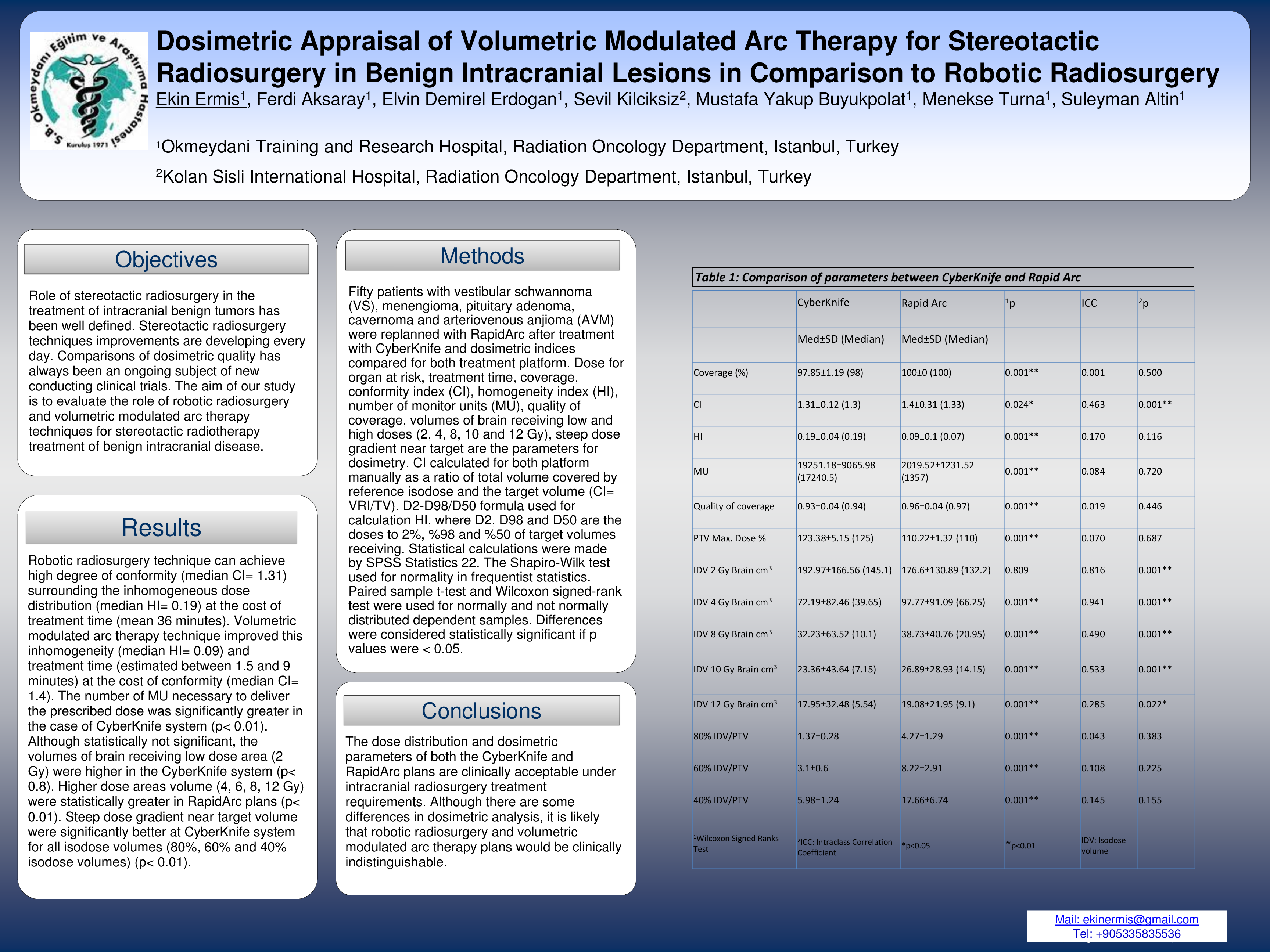Abstract
OBJECTIVES: Role of stereotactic radiosurgery in the treatment of intracranial benign tumors has been well defined. Stereotactic radiosurgery techniques improvements are developing every day. Comparisons of dosimetric quality has always been an ongoing subject of new conducting clinical trials. The aim of our study is to evaluate the role of robotic radiosurgery and volumetric modulated arc therapy techniques for stereotactic radiotherapy treatment of benign intracranial disease.
METHODS: Fifty patients with vestibular schwannoma (VS), menengioma, pituitary adenoma, cavernoma and arteriovenous anjioma (AVM) were replanned with RapidArc after treatment with CyberKnife and dosimetric indices compared for both treatment platform. Dose for organ at risk, treatment time, coverage, conformity index (CI), homogeneity index (HI), number of monitor units (MU), quality of coverage, volumes of brain receiving low and high doses (2, 4, 8, 10 and 12 Gy), steep dose gradient near target are the parameters for dosimetry. CI calculated for both platform manually as a ratio of total volume covered by reference isodose and the target volume (CI= VRI/TV). D2-D98/D50 formula used for calculation HI, where D2, D98 and D50 are the doses to 2%, %98 and %50 of target volumes receiving. Statistical calculations were made by SPSS Statistics 22. The Shapiro–Wilk test used for normality in frequentist statistics. Paired sample t-test and Wilcoxon signed-rank test were used for normally and not normally distributed dependent samples. Differences were considered statistically significant if p values were < 0.05.
RESULTS : Robotic radiosurgery technique can achieve high degree of conformity (median CI= 1.31) surrounding the inhomogeneous dose distribution (median HI= 0.19) at the cost of treatment time (mean 36 minutes). Volumetric modulated arc therapy technique improved this inhomogeneity (median HI= 0.09) and treatment time (estimated between 1.5 and 9 minutes) at the cost of conformity (median CI= 1.4). The number of MU necessary to deliver the prescribed dose was significantly greater in the case of CyberKnife system (p< 0.01). Although statistically not significant the volumes of brain receiving low dose area (2 Gy) were higher in the CyberKnife system (p< 0.8), high dose area volume (12 Gy) were statistically higher in RapidArc plans (p< 0.01). Steep dose gradient near target volume were significantly better at CyberKnife system for all isodose volumes (80%, 60% and 40% isodose volumes) (p< 0.01).
CONCLUSION: The dose distribution and dosimetric parameters of both the CyberKnife and RapidArc plans are clinically acceptable under intracranial radiosurgery treatment requirements. Although there are some differences in dosimetric analysis, it is likely that robotic radiosurgery and volumetric modulated arc therapy plans would be clinically indistinguishable.






